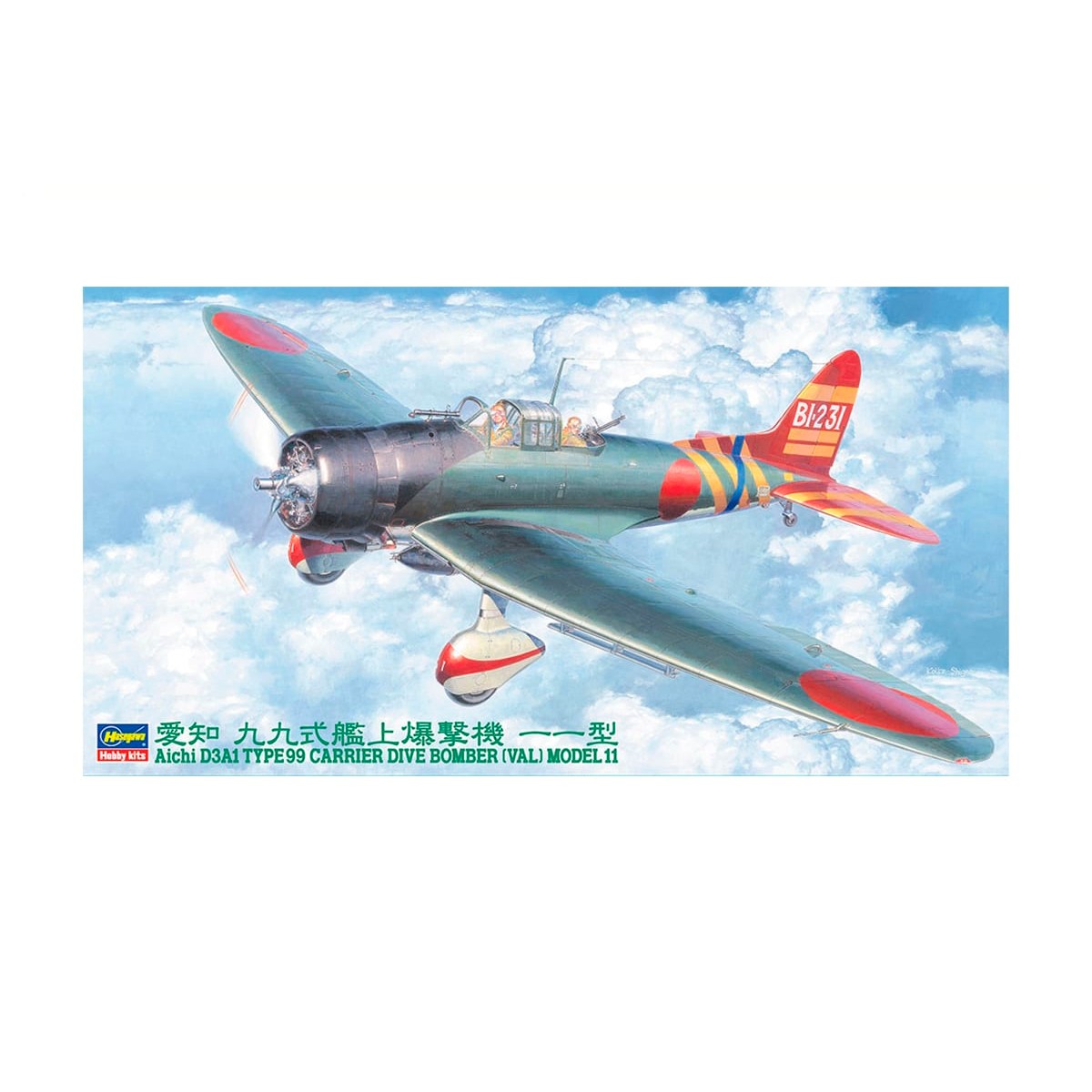JT55 – 1/48 TYPE 99 CARRIER DIVE BOMBER (VAL) MODEL 11
25,95€
In stock

*Please check our Privacy Policies to see how to we use your personal data.
*Por favor revisa nuestra Política de Privacidad para ver como tratamos tus datos personales
Scale … 1:48
Part number ……… JT55
In 1936, the Navy ordered the prototype of the 11th test ship bomber to be made by three companies, Aichi, Nakajima, and Mitsubishi, but Mitsubishi abandoned development on the way, so the two companies , Aichi and Nakajima. The development of the prototype was competed.
In Aichi, the all-metal low wing monoplane,
the plane shape of the main wing and tail wing adopts aerodynamically excellent elliptical tapered wing, the main landing gear is a fixed landing gear with an emphasis on practicality, and the aircraft equipped with a dive braking plate on the underside of the main wing was developed, and the prototype flew for the first time in 1938.
In the subsequent flight test, problems such as sudden rotation that started to roll over and the weight of the elevator took time to repair, but because the speed and maneuverability were superior to the rival Nakajima aircraft , 1939 9 It was officially adopted as the Aichi D3A bomber type 11 (D3A1), and its activity by bombing, which boasted a high hit rate in the early stages of the war, was remarkable.
《Data》
Crew: 2 people
Overall width:
14.36m
Overall length: 10.185m Overall height: 3.085m Total
weight: 3,650kg
Engine: Venus 44 type (maximum lift-off output 1,000hp / 2,500rpm)
Maximum speed: 382km / h
Cruising range: 1,820km
Armed: 7.7mm machine gun x 2 (fixed to the front of the fuselage), 7.7mm machine gun x 1 (turning to the rear of the fuselage)
Bomb: 250kg x 1, 30kg-60kg x 2
Escala … 1:48
Número de pieza ……… JT55
En 1936, la Armada ordenó que tres compañías, Aichi, Nakajima y Mitsubishi, fabricaran el prototipo del undécimo buque bombardero de prueba, pero Mitsubishi abandonó el desarrollo en el camino, por lo que las dos compañías, Aichi y Nakajima. Se compitió el desarrollo del prototipo.
En Aichi, el monoplano de ala baja totalmente metálico,
la forma plana del ala principal y del ala trasera adopta un ala cónica elíptica aerodinámicamente excelente, el tren de aterrizaje principal es un tren de aterrizaje fijo con énfasis en la practicidad, y se desarrolló la aeronave equipada con una placa de frenado en picado en la parte inferior del ala principal , y el prototipo voló por primera vez en 1938.
En la prueba de vuelo posterior, problemas como la rotación repentina que comenzaba a volcarse y el peso del elevador tardaba en repararse, pero debido a que la velocidad y maniobrabilidad eran superiores al avión rival Nakajima, 1939 9 Fue adoptado oficialmente como el Aichi El bombardero D3A tipo 11 (D3A1), y su actividad de bombardeo, que se jactó de una alta tasa de aciertos en las primeras etapas de la guerra, fue notable.
“Datos”
Tripulación: 2 personas
Ancho promedio:
El 14.36m
Longitud total: 10.185 m Altura total: 3.085 m Total
peso: 3.650kg
Motor: tipo Venus 44 (potencia máxima de despegue 1.000 CV / 2.500 rpm)
Velocidad máxima: 382 km / h
Alcance de crucero: 1.820 km
Armado: ametralladora de 7,7 mm x 2 (fijada al frente del fuselaje), ametralladora de 7,7 mm x 1 (girando hacia la parte trasera del fuselaje)
Bomba: 250 kg x 1, 30 kg-60 kg x 2




 Request of SDS product data file / Product security
Request of SDS product data file / Product security